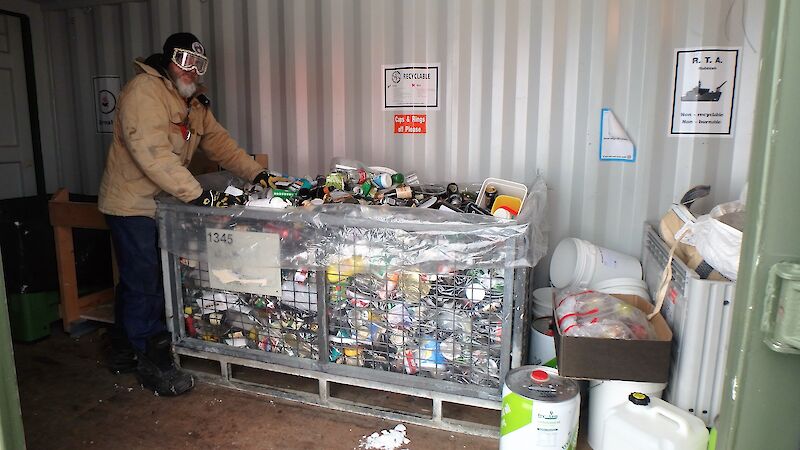Effective waste management practices are vital to Australia’s efforts to protect the Antarctic environment.
Until relatively recently, waste disposal practices in Antarctica were similar to elsewhere in the world with open tips, land fills and burning, as well as the practice of ‘sea-icing’ – dumping rubbish onto the sea ice during winter to float away and sink during the summer. Sewage was burned or else discharged with little or no treatment straight into the sea. Some areas around stations and field camps became contaminated from oil and chemical spills. Large amounts of packaging which could not be re-used or recycled were also sent to Antarctica.
As part of a comprehensive commitment to protect the environment, Annex 3 of the Madrid Protocol PDF obliges all countries to apply responsible waste management principles and to develop waste management plans.
Hazardous materials, including polystyrene beads, PCBs and radioactive materials, are prohibited from import to Antarctica.
Rubbish tips at all Australian stations were closed in 1985 and a committed clean-up program has seen many tonnes of waste removed.
The AAD is researching techniques and the environmental impacts of Antarctic contaminated site remediation, initially focussing on Casey and the abandoned former US station of Wilkes, near Casey.
Expeditioners follow specific guidelines when handling waste on station, in the field and on the ship. These guidelines are published in the AAD Operations Manual.
Waste is handled according to several broad categories:
- Wastes that are likely to become putrid are incinerated in a two-stage, high temperature incinerator, with the resultant ash returned to Australia.
- Metals, plastics, paper, cardboard and glass are separated and returned to Australia for recycling.
- Non-recyclable wastes are returned to Australia for appropriate disposal.
- Reusable packaging materials are used wherever possible.
- Biological sewage treatment plants have been installed at all Australian Antarctic stations. Sludge from the plant is removed to Australia, and the UV sterilisation of the effluent is currently being trialed to ensure that no harmful organisms are released into the environment.
Waste Management Regulations implemented to effect Australia’s obligations to Annex III of the Madrid Protocol PDF make it an offence to dispose of particular types of waste in certain areas. Special procedures also apply to activities away from the main stations, which include removing waste from the field.
The AAD Field Manual includes guidance for waste management off station.
A report on Australia’s Antarctic waste management, covering categories and amounts of waste, is prepared each year for other Antarctic Treaty Parties in the Antarctic Treaty Information Exchange.

